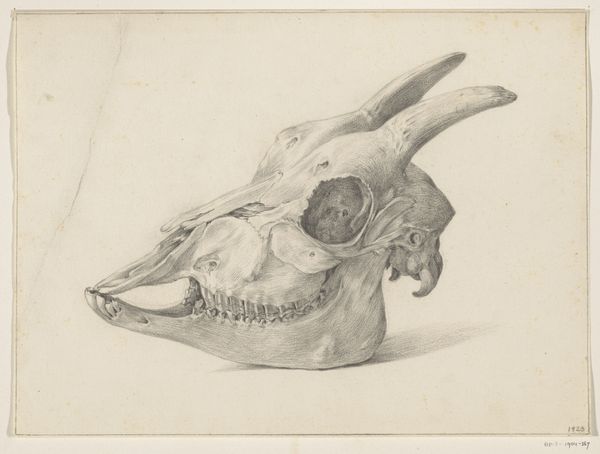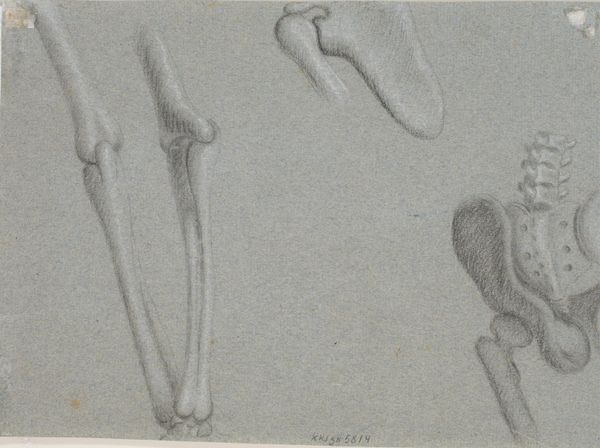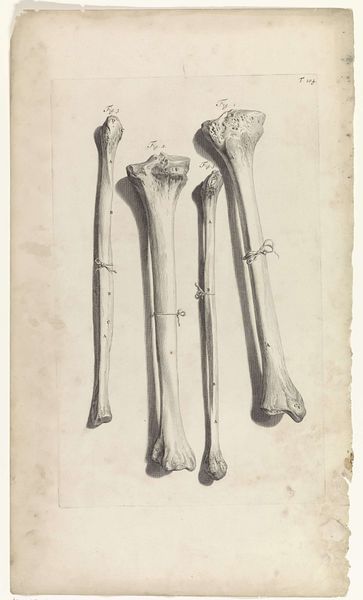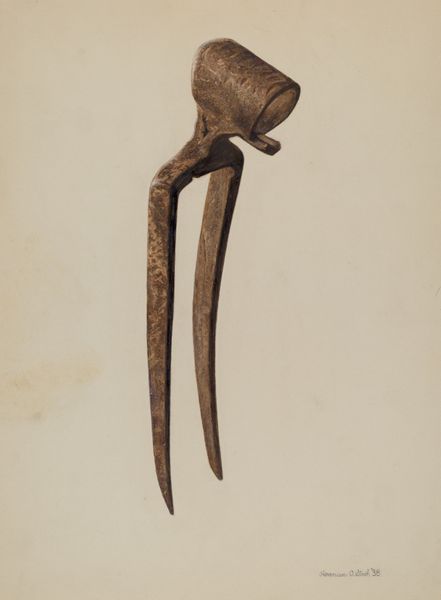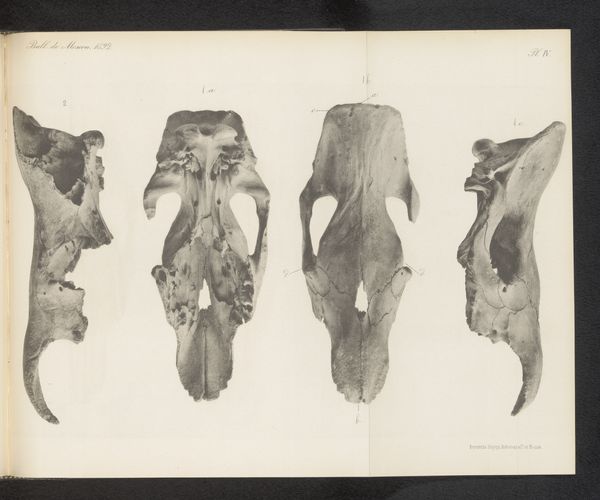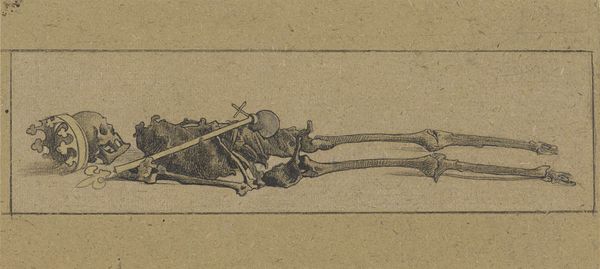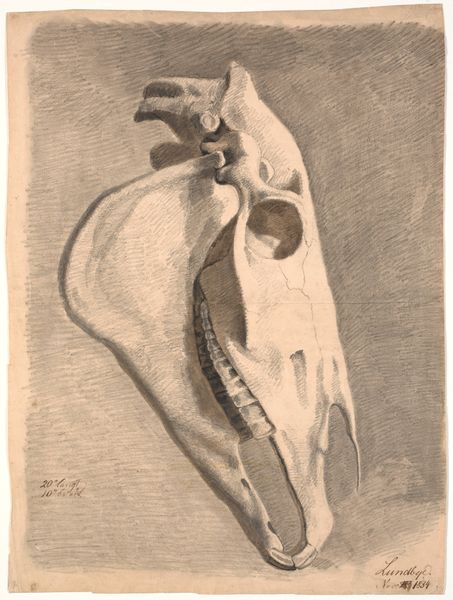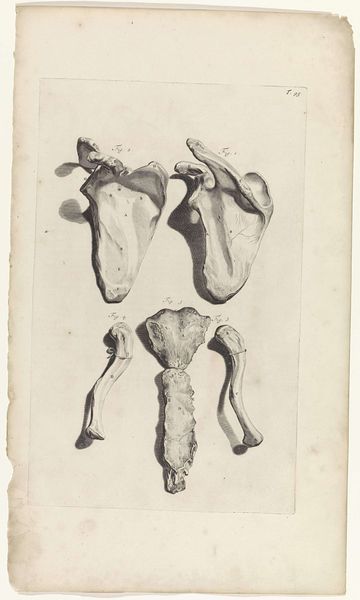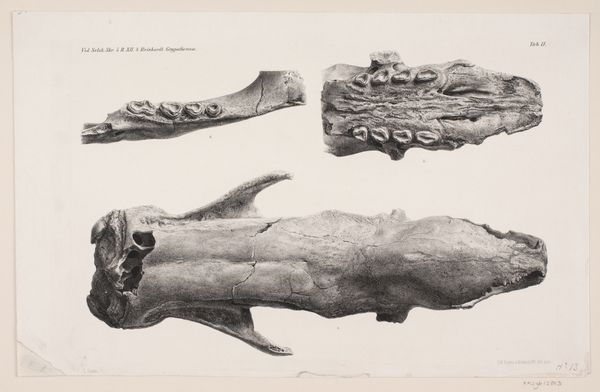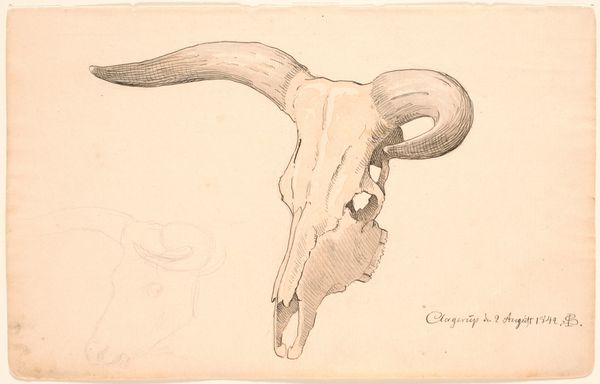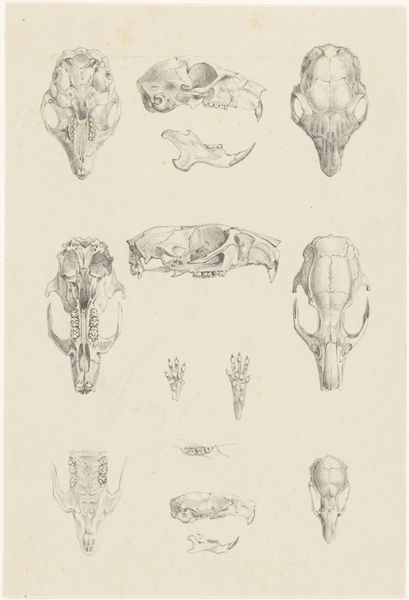
Fossiele beenderen van een oeros, gevonden tijdens de watersnood, 1809 1809
0:00
0:00
drawing, watercolor
#
drawing
#
neoclacissism
#
watercolor
#
watercolour illustration
#
history-painting
#
academic-art
#
realism
Dimensions: height 118 mm, width 160 mm
Copyright: Rijks Museum: Open Domain
Editor: Here we have Hendrik Hoogers’ "Fossiele beenderen van een oeros, gevonden tijdens de watersnood, 1809," or "Fossil bones of an aurochs, found during the flood, 1809." It's a watercolor drawing. I find the starkness of the bones against the plain background quite striking. What narratives do you see at play here? Curator: Well, first, we have to consider what it meant to depict natural history specimens during this time. Early 19th century Europe was a cauldron of evolving nationalisms. This meticulous depiction, made in the wake of a catastrophic flood, isn't simply a scientific record. Consider the symbolic power of the aurochs, a long-extinct, powerful animal. How does its discovery, revealed by the destructive forces of nature, inform ideas about Dutch resilience, and even dominance, over their environment, as they rebuilt? Editor: So, you're suggesting it goes beyond a purely objective study? Curator: Precisely! The scientific gaze is never neutral. Think about who gets to define "nature" and whose stories are centered in historical narratives. The watersnood, the flood itself, disrupted lives across class and geographic lines. But, which victims do we remember? Does this archaeological find further cement notions of a people with deep ancestral roots in that land, conveniently overlooking other claims? Editor: That is a potent way to look at it. I was only seeing the bones, the animal itself and the scientific intention behind it. Curator: The beauty of art is that it's never just *about* what it seems. It’s about the conversations it ignites, the power dynamics it subtly reinforces, or perhaps, even challenges. We have to question whose history gets unearthed, literally and figuratively. What new meanings do these bones acquire once brought into our museum today? Editor: I never considered the loaded context. I see how crucial it is to think beyond the image. Curator: Exactly. It encourages us to investigate whose stories were drowned in the flood, not just in 1809, but also today.
Comments
No comments
Be the first to comment and join the conversation on the ultimate creative platform.
